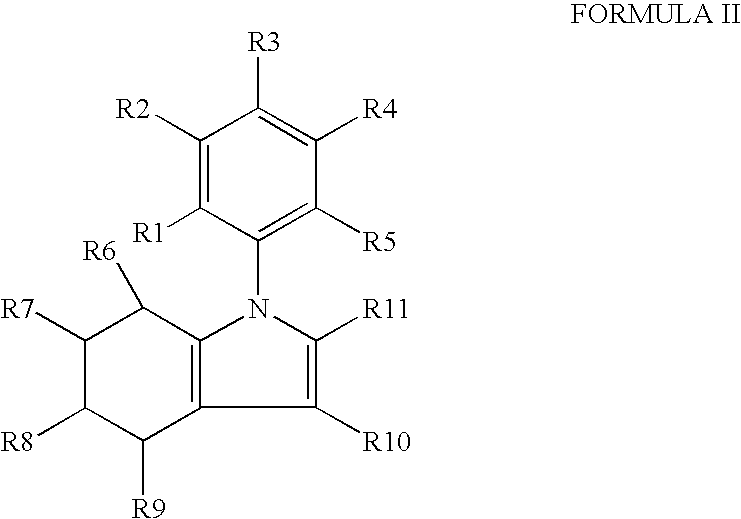Compounds for alzheimer's disease
a technology for alzheimer's and compound alzheimer's, applied in the field of compounds for alzheimer's disease, can solve the problems of brain disorder seriously affecting a person's ability to carry out normal daily activities, no cure, and unknown, and achieve the effects of reducing and improving or lessening the decline of cognitive function
- Summary
- Abstract
- Description
- Claims
- Application Information
AI Technical Summary
Benefits of technology
Problems solved by technology
Method used
Image
Examples
example 1
Tablets
[0596]
IngredientAmountPreferred RangesCompound of Formulae I-XVI400 mg+50% to −50%Microcrystalline Cellulose392 mg+50% to −50%Colloidal Silicon Dioxide 4 mg+50% to −50%Magnesium Stearate 4 mg+50% to −50%The tablets are prepared using art known procedures.
example 2
[0597]
IngredientAmountPreferred RangesCompound of Formulae I-XVI400 mg+50% to −50%Microcrystalline Cellulose392 mg+50% to −50%Colloidal Silicon Dioxide 4 mg+50% to −50%Magnesium Stearate 4 mg+50% to −50%Coated withLactose monohydrateHydroxyl propyl methylcelluloseTitanium dioxideTracetin / glycerol triacetateIron oxideThe coated tablets are produced using art known procedures.
example 3
Capsules
[0598]
IngredientAmountPreferred RangesCompound of Formulae I-XVI400 mg+50% to −50%Microcrystalline Cellulose392 mg+50% to −50%Colloidal Silicon Dioxide 4 mg+50% to −50%Magnesium Stearate 4 mg+50% to −50%Encapsulated in gelatinThe capsules are produced using art known procedures.
PUM
 Login to View More
Login to View More Abstract
Description
Claims
Application Information
 Login to View More
Login to View More - R&D
- Intellectual Property
- Life Sciences
- Materials
- Tech Scout
- Unparalleled Data Quality
- Higher Quality Content
- 60% Fewer Hallucinations
Browse by: Latest US Patents, China's latest patents, Technical Efficacy Thesaurus, Application Domain, Technology Topic, Popular Technical Reports.
© 2025 PatSnap. All rights reserved.Legal|Privacy policy|Modern Slavery Act Transparency Statement|Sitemap|About US| Contact US: help@patsnap.com



